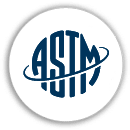Understanding ASTM D790: Flexural Properties of Plastics
ASTM D790 is a standardized test method used to determine the flexural properties of unreinforced and reinforced plastics, including composites. It measures how a plastic material behaves under bending or flexural load, providing critical data on strength and stiffness. The test is commonly used in product development, quality control, and material selection to ensure plastic components can withstand real-world bending stresses without failure.
Importance of ASTM D790
Flexural strength and stiffness are crucial for plastic parts that must bear loads, resist deformation, or span gaps without bending excessively. ASTM D790 helps manufacturers and engineers understand a material’s structural capabilities under these types of mechanical stresses.
Why Flexural Testing Matters:
-
Material Suitability: Helps determine if a plastic is appropriate for structural applications.
-
Design Optimization: Guides engineers in selecting materials that meet strength and deflection requirements.
-
Quality Control: Ensures consistent performance of plastic materials across different production batches.
-
Product Safety: Prevents failures by identifying weak or brittle materials early in the design process.
How ASTM D790 Works
The test involves placing a plastic specimen on two supports and applying force at a single point (3-point bend) or two points (4-point bend) until the sample bends or breaks.
Testing Procedure:
-
Sample Preparation: Rectangular specimens are cut to standardized dimensions.
-
Test Setup: The sample is placed horizontally on two support points.
-
Loading: A loading nose applies force at the midpoint of the span for 3-point testing, or at two points for 4-point testing.
-
Measurement: As the load is applied, the machine records force and deflection until the specimen breaks or reaches a set deflection limit.
-
Results: The data is used to calculate flexural strength, flexural modulus (stiffness), and strain.
Key Properties Measured
-
Flexural Strength: The maximum stress the material can withstand before breaking during bending.
-
Flexural Modulus: A measure of stiffness, indicating how much the material resists bending.
-
Strain at Break: The amount of deformation the material undergoes before failure.
Applications of ASTM D790
ASTM D790 is used across various industries that require materials to bear loads or resist bending under stress.
1. Automotive Components
-
Evaluates dashboards, interior panels, bumpers, and under-the-hood parts that must remain rigid under stress and temperature changes.
2. Construction Materials
-
Tests plastic decking, panels, piping, and insulation materials used in building applications.
3. Consumer Goods
-
Assesses durability and flexibility of furniture, sporting goods, appliance housings, and electronic casings.
4. Aerospace and Defense
-
Measures the flexural behavior of high-performance polymers and composites used in aircraft and defense equipment.
5. Medical Devices
-
Ensures structural stability of plastic components used in equipment housings, surgical trays, and diagnostic devices.
Benefits of ASTM D790
-
Reliable Evaluation: Offers a precise and reproducible method for measuring flexural behavior.
-
Material Comparison: Enables side-by-side comparison of stiffness and strength among different plastic grades.
-
Failure Prevention: Identifies brittle or weak materials that may fail under real-world loads.
-
Supports Innovation: Aids in developing and validating new plastic formulations and composites.
Challenges and Considerations
-
Rate Sensitivity: Results can vary depending on the speed of testing; careful control is necessary.
-
Temperature Effects: Plastics may behave differently at elevated or sub-zero temperatures, requiring testing under specific conditions.
-
Specimen Geometry: Proper sample preparation is essential for consistent results; deviations can skew data.








